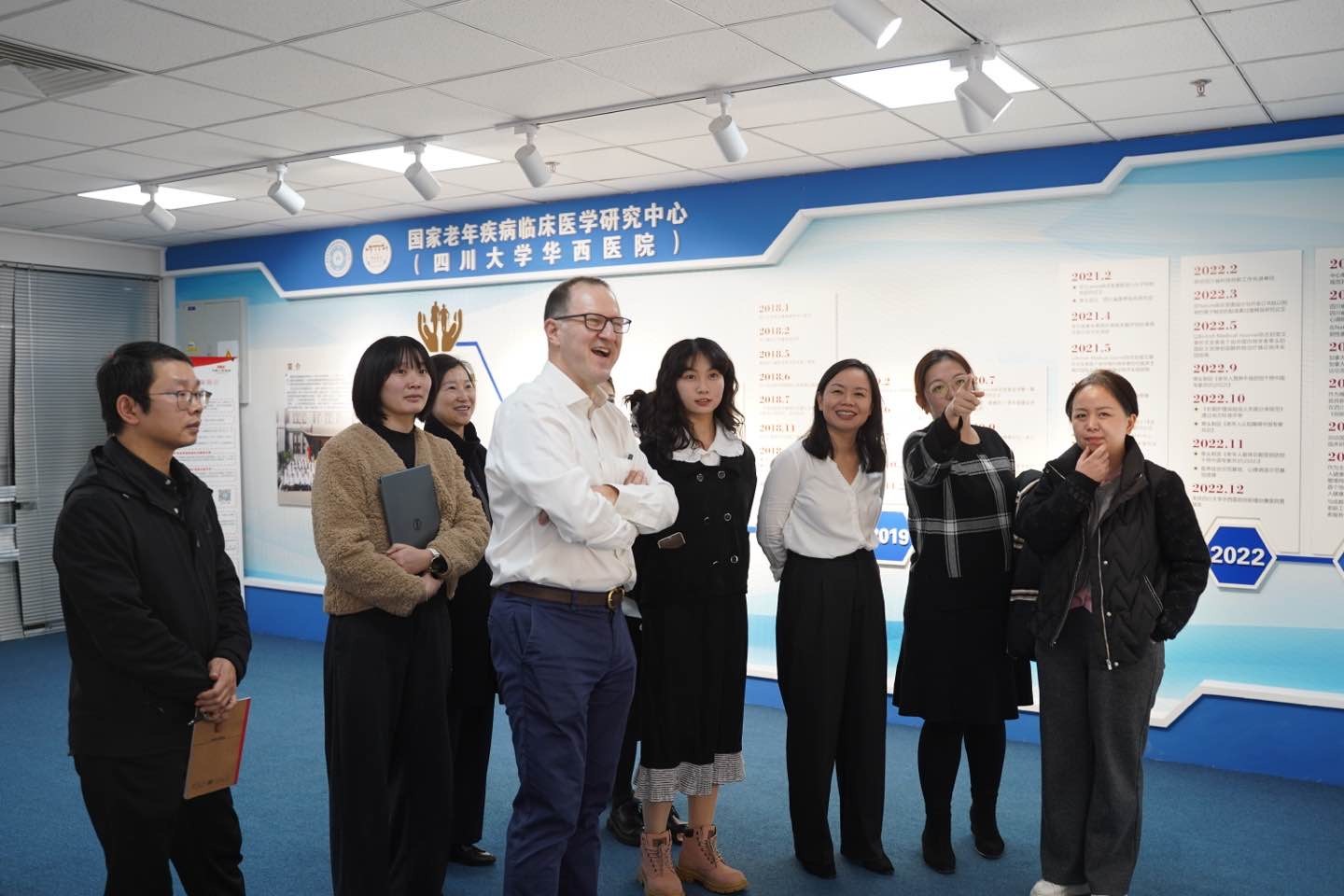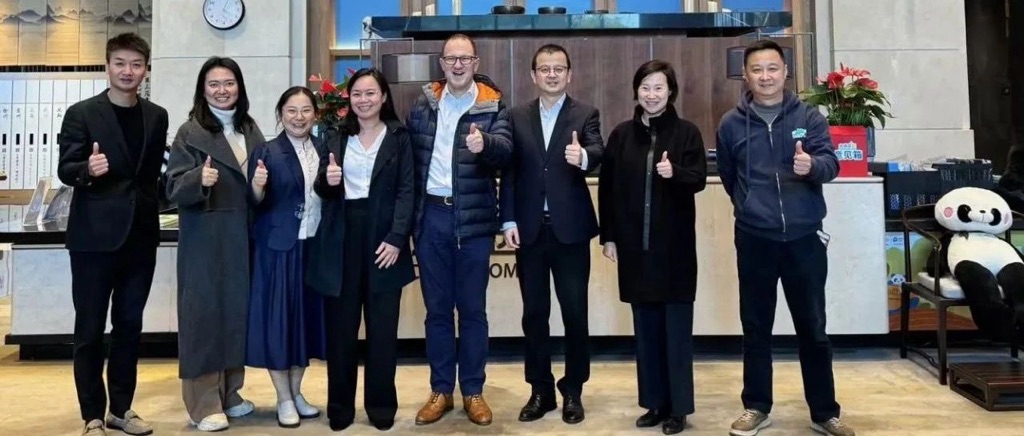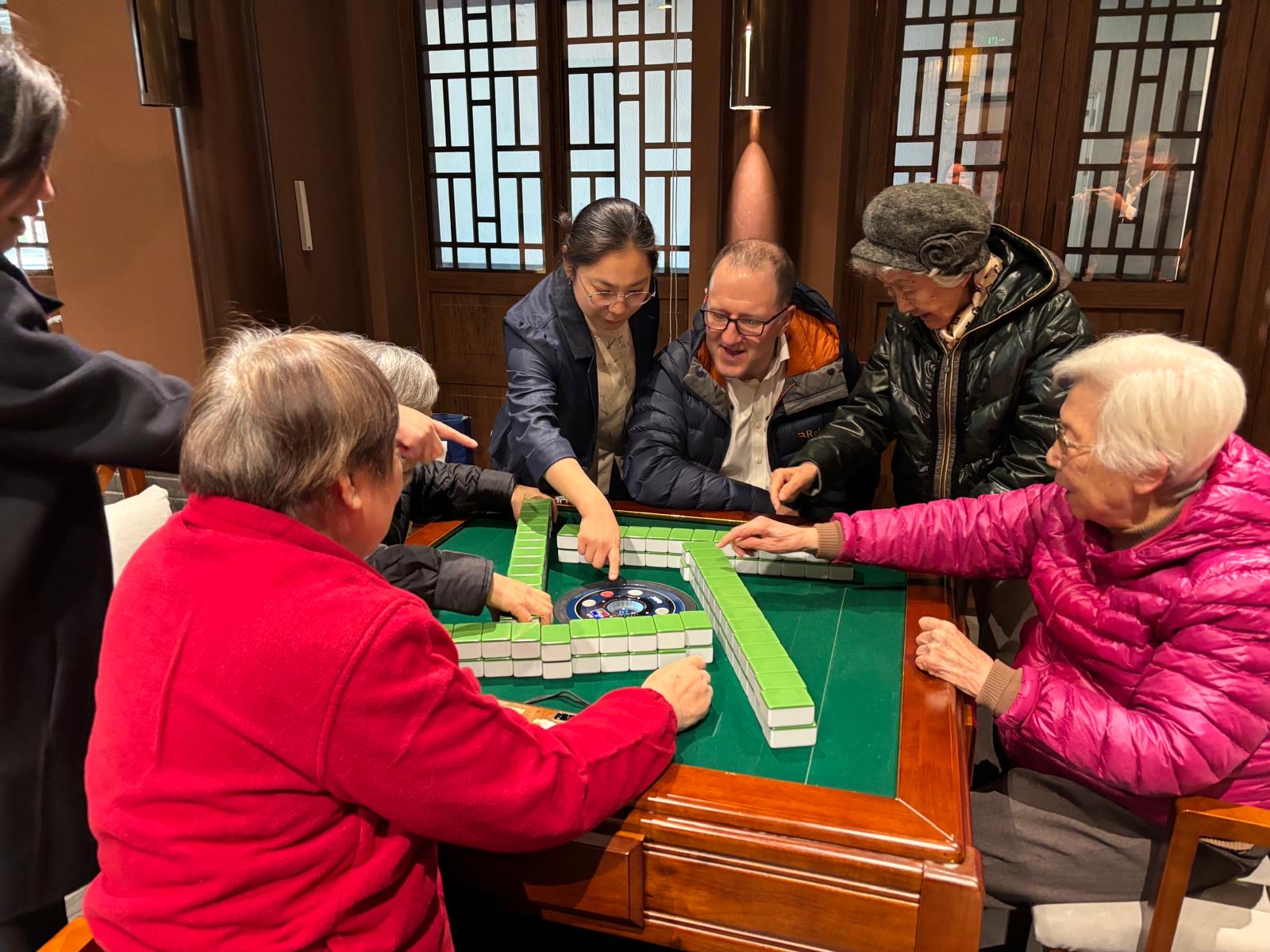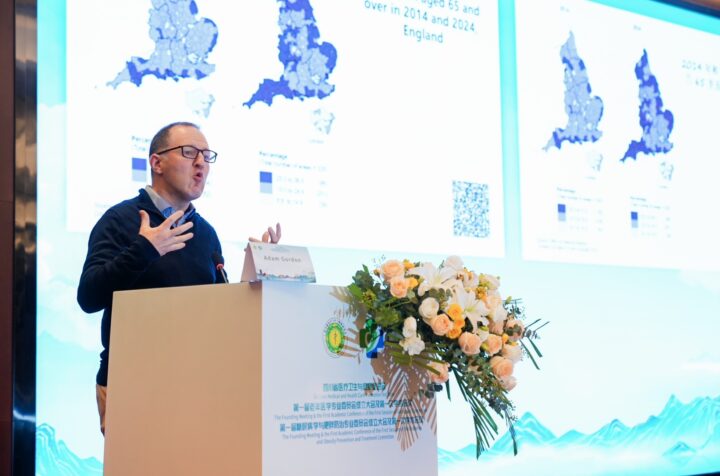Posted on
18 December 2024
Read time
4 minutes

This is how they Chengdu it
Lessons from Care of Older People in China
Population ageing is a global phenomenon. China is one of the most rapidly ageing countries in the world. The number of older people there is increasing as a consequence of a healthy population living longer, whilst at the same time, there are fewer younger people as a consequence of changing lifestyles and the now-discontinued one child policy. China has good reason, therefore, to focus and invest on delivering high quality care and research for older people.
I was excited, therefore, when two colleagues in Chengdu invited me to come and give a talk at a Geriatric Medicine conference along with my University of Nottingham colleague, Dr Jemima Collins. I was keen to take the opportunity to learn as much as possible about how they do care of older people in China, and how they’re focusing resource on research into healthy ageing.

First up was a visit to the brand-new campus for care of older people at the Sichuan People’s Provincial Hospital. In state-of-the-art buildings around a green we learned about efforts to build a comprehensive care model for older people, where all specialties come together for regular multidisciplinary team meetings, and where they’re working hard to train colleagues from all disciplines in evidence-based approaches to the assessment and care of older people. We then went on to the West China People’s Hospital, where provide evidence-based care for older people. This includes some of the most developed hip fracture care in China, an acute care of older people’s ward, and a dedicated ward for older people with palliative care needs. It was exciting to see sub-specialty approaches well established in the UK, like orthogeriatric medicine and surgical liaison, rapidly becoming established in China. We talked a lot about differing cultural expectations when it comes to care, different roles for families in decision-making, and how medical services have developed to meet these. Lots of opportunities for shared learning and adopting the best from each other’s approaches.
We went on to visit care homes run by private organisations developing luxury approaches to post-retirement living for China’s growing upper-middle class. Our hosts were keen to emphasise these facilities would be beyond the means of most normal Chinese citizens. The facilities were beyond impressive – we wandered around Koi fish ponds, were invited to sample meals put together by a team of chefs who had previously cooked for Joe Biden when he visited the Shangri-La hotel, and encouraged to experience the spa facilities open to residents. The most striking thing here, though, was not the opulence that would be difficult to replicate at scale and pace elsewhere, but that the most touching moments came from contacts that mirrored my experiences in UK care homes. A group of ladies tried, and failed, to teach me mah-jong, in the same way that British care home residents have tried and failed to teach me Bridge. We took part in a communal tai chi session in a shared moment that mirrored chair exercise sessions in UK homes. I listened to a lady delight in some time alone with a piano – something that she’d delighted in all her life. These replicated moments spent with UK residents and their keyboards, drumkits and, on one occasion, a trombone. An important reminder that, whilst opulent surroundings are nice, it’s the human moments that count.

We also visited the Chinese Provincial Hospital for Traditional Chinese Medicine. This is a centre with 2000 beds devoted to integrated approaches to care of older people, where Baduanjin (a simplified form of tai chi) and acupuncture take place alongside minimally invasive spinal surgery and interventional cardiology. We know some of these approaches – acupuncture in pain management and tai chi type exercises in building strength and balance – have a very strong evidence-base. Yet we struggle to deploy them in the UK, even as we overuse drugs that often don’t work and may have substantial side-effects. Food for thought.

In amongst all of this, we spent a day with the teams at the National Clinical Research Centre in Geriatrics. Some of this was quite different from our plans for ACHA – we don’t plan to study ageing in rodents or build a massive laboratory any time soon. But a lot of it was very close to what we hope to be able to do. We learned about how the teams used data from health services to learn more about the best models of care. We heard from academic engineers about how exciting it was to work with clinical teams using new technologies, like computer vision and computer-brain interfaces, to improve patient care. Both of these technologies are existing areas of expertise at Queen Mary University of London which we hope to capitalise on as ACHA grows.
Differences. And similarities. But a single shared recognition that, as the global population ages it brings both great challenge and great opportunity. I have a strong sense that we’ll be working together in the coming months and years to rise to the challenges and make the most of the opportunities. We have much to learn from each other as we work to serve our respective communities.

Adam Gordon is Professor of Care of Older People at ACHA. He can be found on X @adamgordon1978 and on Bluesky @adamgordon1978.bsky.social. He reflects here on a recent visit to visit health and social care services, as well as the National Clinical Research Centre for Geriatrics in Chengdu, China.





